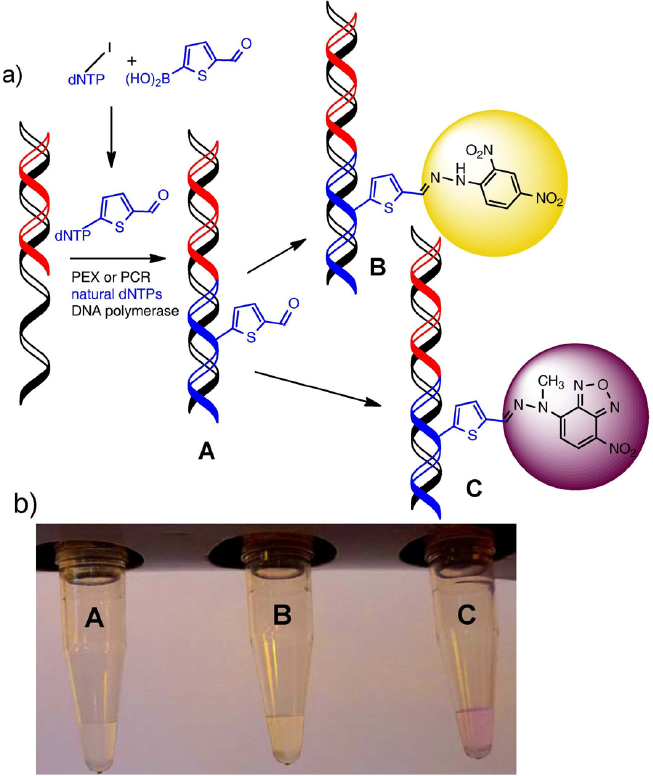
Scientists from the Institute of Organic Chemistry and Biochemistry ASCR (team of M. Hocek) have developed a novel simple and efficient methodology for attachment of other molecules to DNA (bioconjugation). They prepared DNA bearing very reactive chemical functional groups that can be readily (in one step) linked to diverse other molecules e.g. for studying of molecular mechanism of important biological processes or for labeling of DNA by color or electroactive markers. This methodology has a promising potential for a broad range of applications in interdisciplinary area between chemistry and biology.
DNA is a biological macromolecule serving as a medium for genetic information. It is composed of a duplex of two strands. In cell, DNA interacts with a variety of proteins which mediate replication, transcription, repair etc. Some of these crucial processes of life are yet insufficiently investigated on molecular level. To study them, it is often necessary to use stable conjugates of DNA with model compounds (small molecules to biomacromolecules). Preparations of such conjugates usually are very laborious and difficult multistep processes.

The novel methodology developed by the scientists from the Institute of Organic Chemistry and Biochemistry ASCR has now substantially simplified the synthesis of the DNA conjugates. Key intermediate is a DNA bearing very reactive chemical functional groups (aldehydes) as molecular "clips" capable of facile linking to other molecules. The methodology of its synthesis is very straightforward and consists of only two steps. The first step is chemical synthesis of modified nucleoside triphosphates and the second one is enzymatic polymerase catalyzed synthesis of DNA from these building blocks.
In this way, one can prepare both short sequences containing one or several aldehyde "clips" and very long DNA containing hundreds of such groups. The aldehyde groups readily react with a number of reagents to attach virtually any other molecule. This principle was shown on the formation of colored compounds (hydrazones) used for staining of DNA to yellow or pink color (see Figure). Now other reactions of the modified DNA are studied in order to attach important biomolecules (peptides, proteins etc.).
This methodology may find a wide range of applications not only in preparation of diverse bioconjugates of DNA but also in material science or nanotechnology where the DNA could serve as an easily programmable and renewable scaffold for attachment of useful chemical molecules of functional groups.
Original publication:
- Raindlová, V.; Pohl, R.; Šanda, M.; Hocek, M.: Direct polymerase synthesis of reactive aldehyde-functionalized DNA and its conjugation and staining with hydrazines. Angew. Chem. Int. Ed., 2010, 49, 1064-1066. https://doi.org/10.1002/anie.200905556






